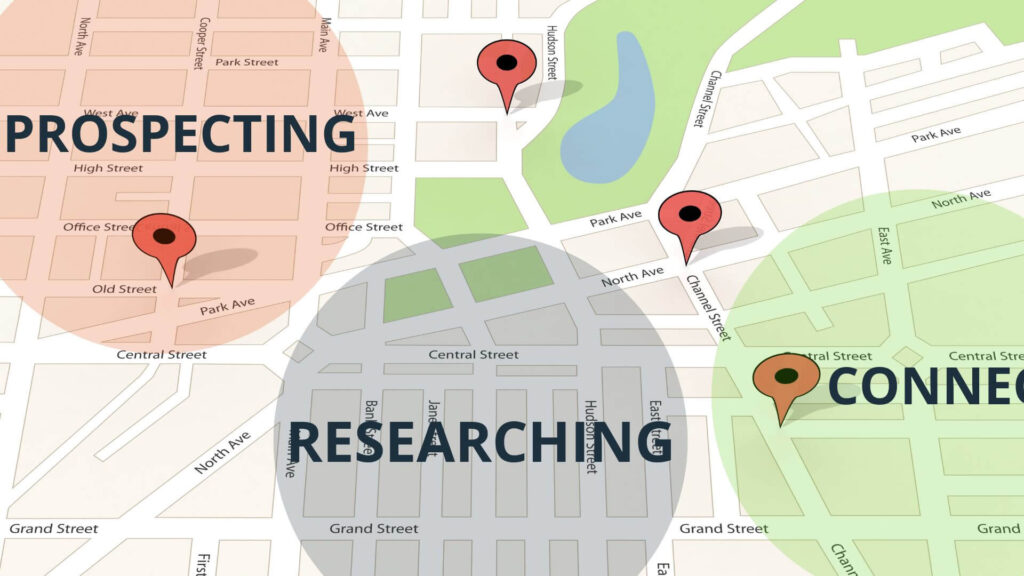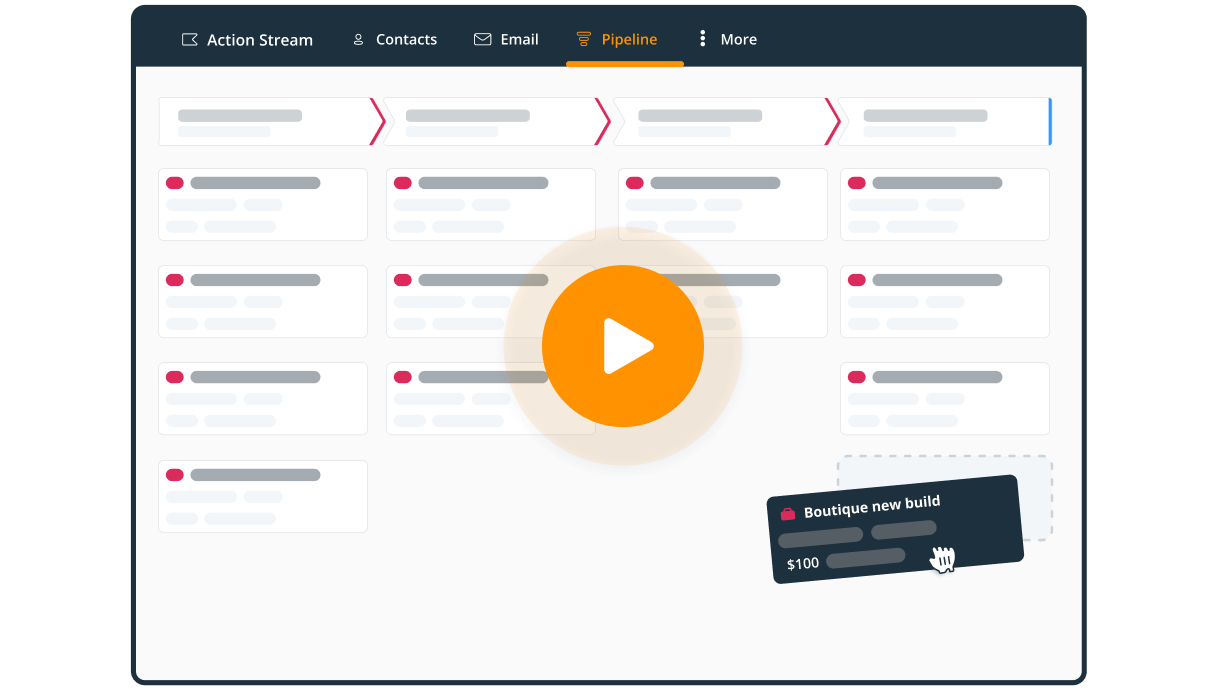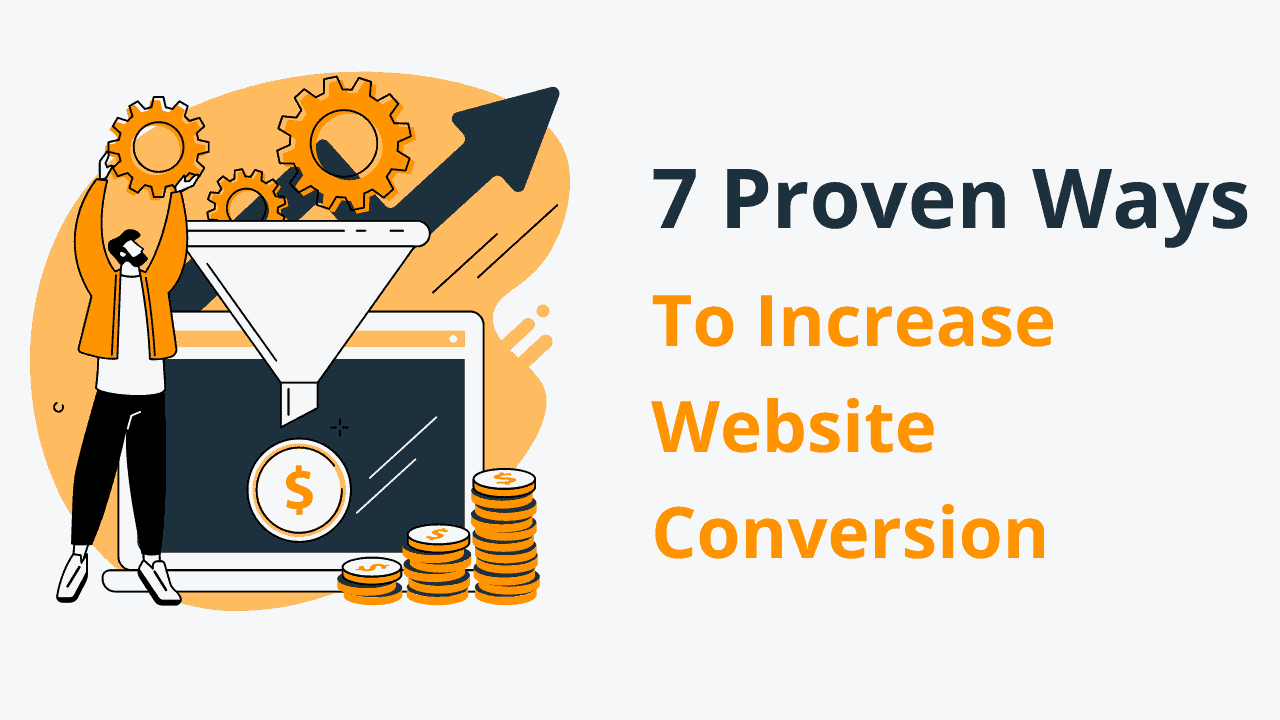

How to build a successful sales process: 7 simple steps

Have you ever tried searching for information about sales processes online? You’ll find tons of articles talking about what a sales process is and how to implement an effective one.
But here’s the thing: many of these articles are really confusing.
Sometimes they discuss the same concepts but use different terminology. For example, in one article, the author might write “sales cycle,” and in another, they’ll call it a “sales process.”
It’s enough to make your head spin, right?
And to make it even trickier, there are different kinds of leads—cold, lukewarm, warm, leads with intent otherwise called SQLs, MQLs, sales-ready opportunities… And guess what? These terms are also sometimes used interchangeably with “prospects.”
If you’re new to the business world and trying to figure out how to set up your sales process, or if you’re just looking for simple ways to improve your current process, we’ve got you covered.
We made this super simple sales guide that explains everything you need to know about a sales process in plain English.
So let’s dot all those i’s and cross those t’s once and for all.
What is a sales process?
It’s really that simple. 🙂
Any lengthy definition of what a sales process is doesn’t do this concept any justice.
What’s the difference between a sales process and a sales cycle?
If you ever tried googling for sales process examples or definitions, you definitely came across the concept of a sales cycle. Sometimes, these terms are used interchangeably.
However, they don’t mean the same thing.
Imagine a sales process as a street network on a city map, bringing you from point A to point Z. In this example, the sales cycle is a collection of the city districts where these streets wind through. And these districts have different names: Prospecting, Researching, Connecting, etc. Each district has its own streets too.

While the sales process addresses the question of “how”, the sales cycle paints the picture of “where.”
Being well-versed in the sales cycle and understanding the dynamics of each district—whether it’s Prospecting, Pitching, or Closing—is essential.
For example, imagine you’re in the Prospecting district. You might expect the following streets there:
- Shortlisting
- Scoring
- Qualifying
Shortlisting, scoring, and qualifying are all part of prospecting and are also part of your sales process. These are the concrete steps that can get you from one sales cycle stage to another.
Reason for building a sales process
Imagine trying to navigate a city without a map and streets. It’s doable but pretty much chaotic. No clear direction, no signs, nothing—just the hope that you’ll reach your destination at some point.
The same applies to the world of sales.
Without a well-defined sales process, you’re navigating the sales landscape blindly, relying on hope and luck rather than strategy.
A sales process shows you the route to a successful sale and just like streets guide you through the city’s districts, a sales process efficiently guides you through the distinct stages of a sale.
Here are a few reasons why every business needs a sales process:
Clear guidelines
“If you don’t know where you’re going, any road will take you there,” — Lewis Carroll said this (or more likely wrote it) a long time ago.
And it’s still true.
If you want to get from one point to another, you need a plan—or at least a rough idea of how you’ll get there.
Consistency
A sales process brings consistency and repeatability to your approach. Much like following a familiar route on a map, a defined sales process allows you to follow proven steps that have worked before.
And it’s not just about efficiency. Your clients will appreciate well-organized and predictable processes.
Revenue growth
Following a formal sales process is crucial for B2B companies who want to grow revenue. That’s the conclusion of a Harvard Business Review article on a survey of 62 B2B companies, 39% of which have revenue greater than $1 billion.
“The sales pipeline is merely a representation of a company’s sales process,” said the article’s authors. Companies that defined a formal sales process had 18% higher revenue growth ratings than companies that didn’t.
Company-wide alignment
Depending on the size of your business, you might have several teams or team members with different roles.
There’s the marketer, the sales representative, and the customer success manager. There might also be different levels of sales reps: SDR, BDRs, AEs, Specialists… You get the idea!
To achieve effective collaboration among all of these roles, you need one factor that will unite and guide them to the common goal. That’s where a formalized process comes into play. It ensures everyone works together and knows what they need to do.
Overview of a sales process
The sales process doesn’t belong to one department or team any longer.
It’s the collective responsibility of the marketing, sales, and customer service teams. Alongside some admin personnel too (for example, office managers and accounting can play a role in this too).
No matter how small your business is, you might notice that you already have some kind of a sales process.
Any sales process has 7 distinct steps whether you’re selling to individuals or to businesses—and it’s not a new concept. The 7 steps of a sales process were created a long while ago. Once you become aware of them, it’ll be easier for you to create a more granular sales process that fits your business.
Every sale goes through these 7 steps but you need to adapt them to your business. So when creating your own sales process, identify specific actions that you need to take during each of the 7 steps.
1. Shortlist
First off, let’s start with the pre-relationship step. It’s all about prospecting and qualifying.
The pre-relationship step is a perfect time for prioritizing leads. Everyone can’t be your target audience—and you probably won’t have time (and don’t have to) to build relationships with every lead.
So use lead scoring to decide who to reach out to first. Lead scoring is a numerical scoring system that prioritizes leads based on their engagement level and how they match your Ideal Customer Profile.
The pre-relationship step is often the time before your leads enter the top of the funnel. It’s the time when they might not even be aware of your product or services yet.
Say, you provide financial consulting services. A potential client might not be ready to pay for a financial consultant yet and might be looking for a way to solve their problems on their own. They google articles and search for some how-to guides. They might come across your website and find your content valuable. But it can take them a few visits before they decide to subscribe to your newsletter.
Notice that all of this happens before you reach out to them. But the sales process begins already here.
Some leads will be more interested in your services or products than others, even if they have similar pain points. This is why shortlisting/lead scoring/prioritization is so important.
So in the first step of the sales process, you need to focus on identifying what leads are worth pursuing. Set some criteria. When is it worth building a relationship with them? Does it make sense financially? What attributes should your best leads have? Who is your ideal buyer and where do you find them?
This step is sometimes referred to as prospecting.
Prospecting requires you to not only identify the right candidates but also learn more about their possible pain points and find a way to grab their attention.
2. Research
Once you do some initial prioritization and lead qualification, it might be tempting to start reaching out to promising leads straight away.
But hold on for a minute.
Before you jump in, always do some research.
You’ve got your list of contacts ready—either collected manually or from your subscribers who willingly shared their info. But you can’t just shoot out the same message to everyone.
That’s where segmentation comes into play. Break down your contact list into different groups for smarter outreach and try to find out as much about them as possible. Once you start learning more about them or their business, you’ll notice that some leads move down your prioritization list while others move a bit higher.
Moreover, you’ll feel much more comfortable when you reach out to them for the first time.
Don’t feel the pressure to fill in all of the gaps during your initial research—this is just the starting point and the qualification process will continue over the next steps.
As you progress further with every lead, you’ll gather more information about them and will be able to see more clearly if it’s a good match.
There’s no shame in disqualifying leads later in the process.
3. Connect
Once the initial research is done and the leads are prioritized, it’s time to initiate contact.
Be ready to follow up a few times before you get a response. Sales is not a game of one-shots. Following up is important to be at the top of the mind of your lead.
How you initiate contact in your sales process is up to you. It can be a cold email, a LinkedIn message, a call, or any other method—or even a mix of everything!
But regardless of your method, the goal is the same: you want to set up a meeting with them or establish a line of communication.
If you’re in B2B sales, it’s worth connecting with several people in the organization to get a holistic view of their business and how you can solve their pain points.
4. Engage
Once you’ve got a “yes” for a call or a meeting, it means that the lead is interested in getting to know more about your service or product. They’ve moved past the awareness stage and are ready to consider different options.
Think about the best way to present your product or service. Is it better to schedule a video call or an in-person presentation? The answer depends on your business type.
The goal here is twofold:
- show the value of your offering,
- get to know your lead better.
Your presentation should speak both to the mind and to the soul. Highlight value and facts but also try to appeal to emotions. You need to stand out from your competitors and build a desire to explore your product or service more.
5. Address concerns
Imagine that the meeting is going well and there’s a potential to close this deal.
That’s great, right? But there’s still a chance that your lead might have some concerns.
If your solution is expensive, they might be reluctant to commit straight away. Offer them a trial period or a free consultation call.
If you don’t have a well-known brand, they might be more inclined to choose your competitor. Win them over with exceptional client service and attention to detail.
Practice active listening skills and do research before every interaction with your leads. This will help you be more comfortable with objections, anticipate them, and demonstrate competence. If you’re not sure whether you can handle objections, spend some time learning about the most common ones and how to deal with them.
Objections are not always a sign of a poorly qualified lead. Your potential client might be simply overwhelmed with choices. Have you heard about the paradox of choice? The more choices we have, the harder it is to make a decision.
6. Close
In simple terms, closing happens when a potential client signs the contract or when a transaction happens. In other words, they become a paying client of yours.
It can take several reminders to bring the potential client to this last step even if they already expressed interest in buying from you.
Sometimes they might still be considering whether they want to buy right now, other times they might be busy with something else and putting off the purchase till later.
That’s why there exist many different closing techniques that can help you seal the deal faster.
7. Nurture
Closing the deal might mark the official end of the sales, but the relationship you’ve nurtured doesn’t disappear. It’s now in the hands of the Customer Success or Customer Support team.
However, since there can be opportunities for upselling, cross-selling, and repeat business, the sales process doesn’t end after the contract is signed.
Don’t let the connection fade away. Keep nurturing it through regular check-ins.
It’s also a good practice to ask for a referral or a testimonial after a successful sale or your first check-in. If it was a pleasant interaction, it’s still fresh in the mind of your new client and they might be more inclined to leave a positive review or recommend you to someone else.
Remember, closing the deal isn’t the finish line. It’s the starting point of a long-term business relationship.
7 steps to create a sales process
The above 7-step model gives you a quick overview of a general sales process.
Now it’s time to see how you can adapt it to your business and build your own sales process from scratch.
Look at your business as a whole
Before creating a sales process, start with the very basics.
Why does your company exist? What do you sell? How big is your team? What departments do you have? What are your company-wide goals for this year, quarter, or month?
Starting with a bird’s view of your business might seem counterintuitive. After all, if it’s a sales process, why would you start with a company strategy? But this quick exercise will help you stay on course, clear your mind, and get the buy-in from other key stakeholders.
A formal sales process clearly defines the stages and milestones in your sales pipeline but that’s not enough to ensure growth. “Too many sales teams use generic sales processes,” HBR points out, “and consequently get generic sales performance.”
Set clear objectives
Do you want to improve the quality of your leads? Do you want to get more qualified marketing leads? Do you want to close more deals? Or deals of higher value?
Depending on your main objectives, you might need to tweak the sales process and focus on some of its parts more than others.
For example, if you want to improve the quality of marketing leads, then you probably need to work pretty closely with the marketing team—so pay more attention to the pre-relationship stage.
If the objective is to increase the value of the deals, a SMARTER goal might translate to:
“Increase the average value of sales deals by 15% within the next fiscal year, as compared to the previous year’s average, by implementing targeted upselling and cross-selling strategies. Progress toward this goal will be evaluated on a monthly basis to identify areas for improvement and communicated companywide”.
Factor in your resources
How big is your team? Do you have a person for prospecting, another one for cold calling, another one for closing deals, and so on? If you’re a small business owner, it might not be the case.
Understanding your team’s strengths and weaknesses will help you create a strong sales process. Also, if you know for sure that in the near future, you’re not hiring anyone, then there’s no place for “what if” discussions. You can stay focused on how much you can do with what you have right now.
Create buyer personas
Who is that you are trying to sell to? What is your target market? There’s a difference between how you’d approach sales in the US vs. Japan.
When building buyer personas (also called Ideal Customer Profiles (ICP) or ideal buyer profiles), there’s no harm in listing hard no’s too. These are the criteria that help you determine straight away whether a lead doesn’t qualify at all. If for example, you’re targeting small businesses and then receive a lead from a large corporation, you shouldn’t spend time on qualifying them.
You don’t have to create buyer personas but having a list of qualifying criteria/questions will definitely help.
Involve different stakeholders
Not only your sales team is responsible for the sales process. This is a company-wide job. Customer success, customer support, business development, marketing—all should work together on bringing in new clients and finding more efficient ways of doing this.
Visualize your sales process
How can you build something if you don’t know what it is? Visualize your sales process to clearly see how a potential client moves through different stages and steps.
For example, your sales pipeline can include steps such as:
- Introductory email
- Call
- Proposal sent
- Contract sent
- Deal closed
This is just a simple example. You can also create a more detailed document that will go into detail describing your sales process:
- How should your team overcome objections?
- What resources are needed?
- What are the most common objections to expect?
- Where do you look for new leads and prospects?
- What’s the best way to engage?
- What data should you collect and analyze?
Start from a blank sheet of paper and draw a flowchart, with stages, decision blocks—anything that works for you.
Branch out if needed
Does your business offer very different services or products? Then you might need several sales processes and multiple sales pipelines.
Your services might go into three distinct categories:
- your core offerings,
- new offerings,
- or completely new products.
Each of these categories will need a different sales process.
Another important parameter in a sales process is the deal size. The average deal size is a very good proxy for the project complexity, the number of decision-makers involved, and the validation process you have to go through.
Stay real
If we lived in the ideal world, then we’d probably have enough time to personalize our approach to every single lead that enters our pipeline. But this is not the case.
So when creating your sales process, be real about what can be done and what will lead to unnecessary stress.
Ask yourself: Is this step doable or will it be skipped most of the time? If some steps in the process are ignored, then they shouldn’t be part of the process.
7 tips to improve your sales process
If you already have a sales process but feel that you might be missing something, here are a few things you can do to improve it.
Combine inbound and outbound methods
It’s great when marketing brings in good leads but it’s not always the case.
Sometimes you need to go out in the fields and talk about your company to potential clients. For example, reaching out to them via cold emails or attending industry events. Social selling can also work wonders.
Whatever you do, try to find the right mix.
Align different teams
Every department in the company should keep the bottom line in mind. Sales is just one of them. And salespeople are not the only ones who deal with customers.
Marketing might not be considered a very customer-facing role but it can also make or break a sales process. So make sure that all teams are aligned and understand the sales process.
Formalize your sales process
If you’re a small company, you don’t have to have a very formal process. It’s enough to have just some basic formalization.
In OnePageCRM, we like checklists. They are pretty simple and help keep everyone on the same page and guide people from one point to another. For example, there’s a checklist for what the marketing team needs to do every year on the 1st of January. There’s a checklist for project managers too (we call it the “Golden Rules of PM”).
These are simple documents (not surprisingly, one-pagers 😁) but they help us visualize our processes and keep things moving.
Self-reflect
Always keep an eye on loopholes or bottlenecks.
Each time you get a new client, make sure that you learn something from this experience. What went well? Is there something you could have done better?
To keep the process working, you need to review it regularly. Have monthly or quarterly meetings with your team. Adjust the frequency of these meetings depending on your sales cycle.
Keep your eyes and ears open
You can sketch and formalize a sales process but client connections are too dynamic to fit into any rigid structure. This is why you always need to keep learning from your clients. Having clearly defined buyer personas is great but they might not be relevant in a year.
Besides, your services are evolving too, the business environment is changing, your clients are changing, and their needs and preferences might not be the same.
Think about whether it’s worth to interview a few existing and new clients. It can be 15-20 minute conversations where you try to find out more about why they chose you over your competitors. These insights will help you improve your sales process.
Experiment
Similar to the point above, what worked for you yesterday might not work for you today.
Be open to new opportunities and new approaches. Maybe there’s a new tool that makes it easier to research your prospects. Or maybe you need a simpler and faster CRM system.
Spend one day every year, for example, on the first Monday of December, researching what new tools and sales approaches emerged this year and whether it makes sense to implement them in your business.
Ideally, you need to keep an eye on this throughout the year but with all other tasks on your plate, it might not be feasible. So start small if needed.
By the way, did you know that OnePageCRM is the only sales CRM that combines both a simple contact database and powerful sales functionality? See for yourself:
Stay committed
This piece of advice comes from our own experience.
OnePageCRM competes in a tough market with thousands of CRMs, including giants such as HubSpot and Salesforce. That’s why we don’t just experiment and brainstorm new ideas but we also commit to them and see them through.
When you try something new in your sales process, it might not be perfect straight away. So don’t get discouraged. It’s fine if your sales process improves gradually without changing drastically all the time.
Top 5 mistakes in a sales process
Here are the most common mistakes companies make in their sales processes.
1. Put all stakes on people
Even if you hire the most talented salespeople, they still need a structured process.
A solid sales process is like a roadmap that even the best team needs to follow for consistent success. It’s about finding the balance between having talented individuals and a well-structured approach.
2. See won deals as the end game
There are loads of different sales frameworks: Inbound selling, BANT, MEDDIC, SPIN selling, to name a few. They exist to offer guidance but they are not the ultimate source of truth.
A strong sales process relies on understanding clients, addressing their needs, and providing value. It’s about nurturing long-term relationships rather than closing one-time deals.
3. Not having a documented process
Relying solely on knowledge transfer among teammates can decrease performance. A more formal onboarding process with documented knowledge helps new members get up to speed faster and maintains consistency across the team.
4. Forget about training and coaching
Your salespeople might be great at nurturing relationships and closing new deals but face challenges in upselling and cross-selling. Providing them with proper sales training can bridge this gap and help them master the art of selling conversations.
5. Sacrifice ethics for performance
High sales numbers don’t justify unethical behavior. Great salespeople don’t focus solely on hitting targets, they also uphold company values and reputation. High performance should go hand in hand with having your clients’ interests at heart.
Navigating sales with a process
A sales process is the catalyst that bridges objectives with tangible results. It’s the roadmap that helps build strong business relationships.
In the dynamic world of sales, a robust sales process isn’t just a tool—it’s your strategic advantage. Here’s to embracing better processes! 🚀












